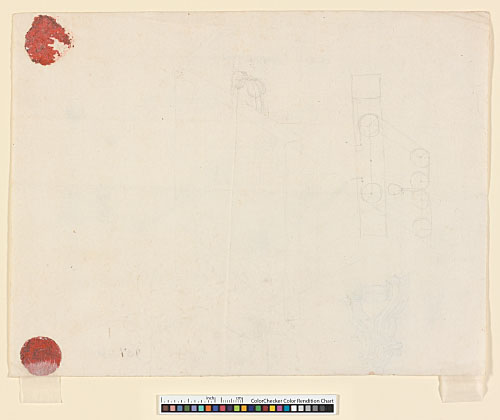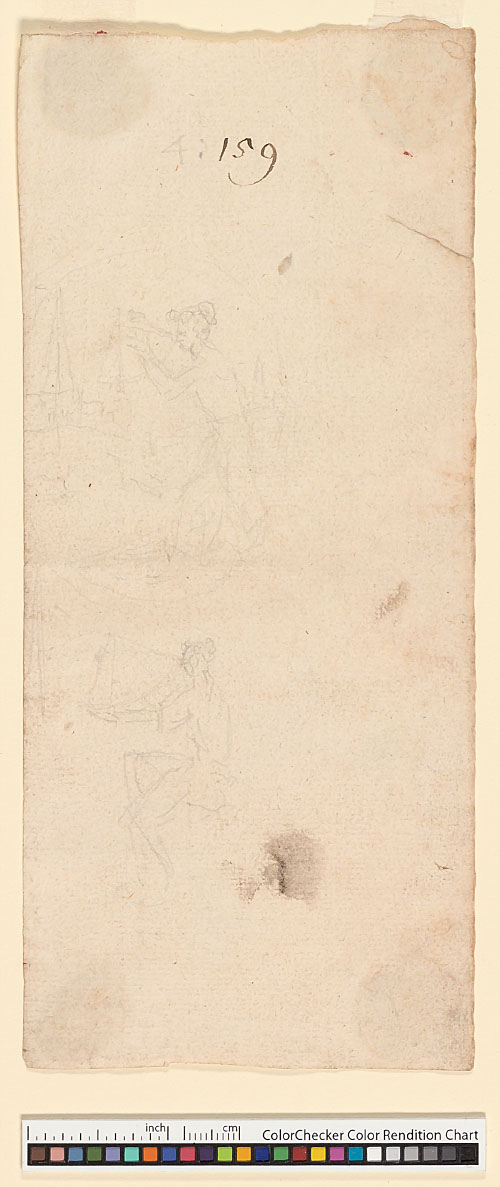
382 (a) - AS IV.156 (click to view in Digital Bodleian)

382 (b) - AS IV.156 (verso) (click to view in Digital Bodleian)
382 (a and b) - AS IV.156. Design for a perspectograph. Preparatory studies, drawn by Wren on both sides of the sheet. 173 x 226 mm. Watermark (incomplete): coat of arms (similar to Heawood 637–38).
Note to 382: Wren developed his 'Scenographical Instrument' in the 1650s. Several were in existence by 1663, and in 1669 Henry Oldenburg published a 'Description Of an Instrument invented divers years ago by Dr. Christopher Wren' in the Philosophical Transactions (Wren 1750/1965, 213; Bennett 1982, 74–76; Downes 1982b, 49). Wren's sketch is broadly consistent with Oldenburg's illustration. The instrument worked as follows. An object was viewed through a pin-hole and traced by a pin. The pin was attached to a horizontal ruler, at the other end of which was a pen. The pen duplicated the movements of the pin by means of pulleys and weights. The tracings of the pin were thereby transferred on to a piece of paper attached to a vertical frame.
383 - AS IV.159. Two pencil sketches of a female allegorical figure viewing a church spire with a surveying instrument. The top version is worked out more fully and set within an oval frame. 191 x 82 mm. No watermark.
Note to 383: These sketches should be compared with Robert Hooke's description of a quadrant instrument devised in 1665 'for taking angles, so that thereby we are able from hence to tell the true distance between [St] Paul's and any other church or steeple in the city' (Jardine 2003, 117). The oval frame suggests a study for a published illustration.
